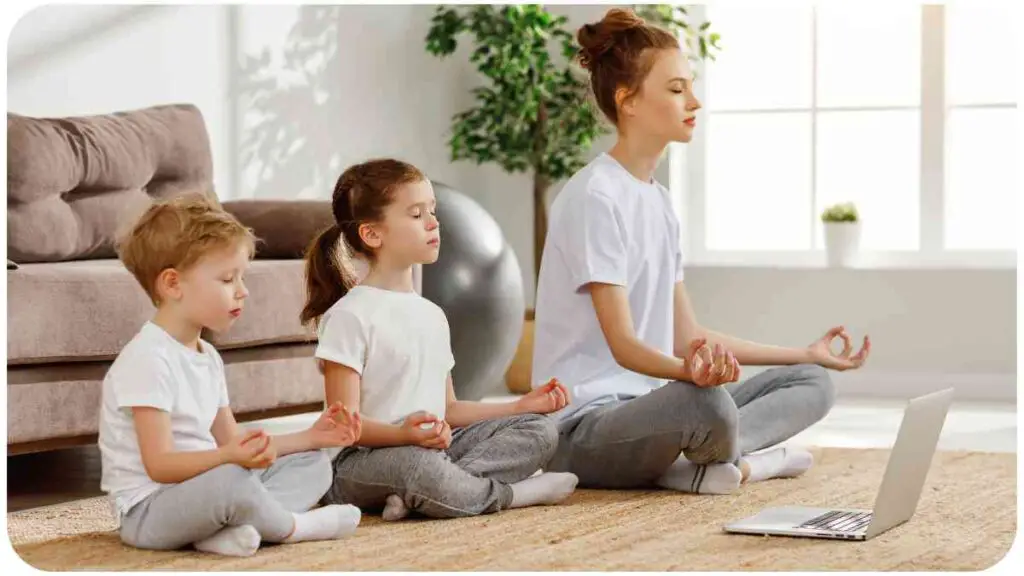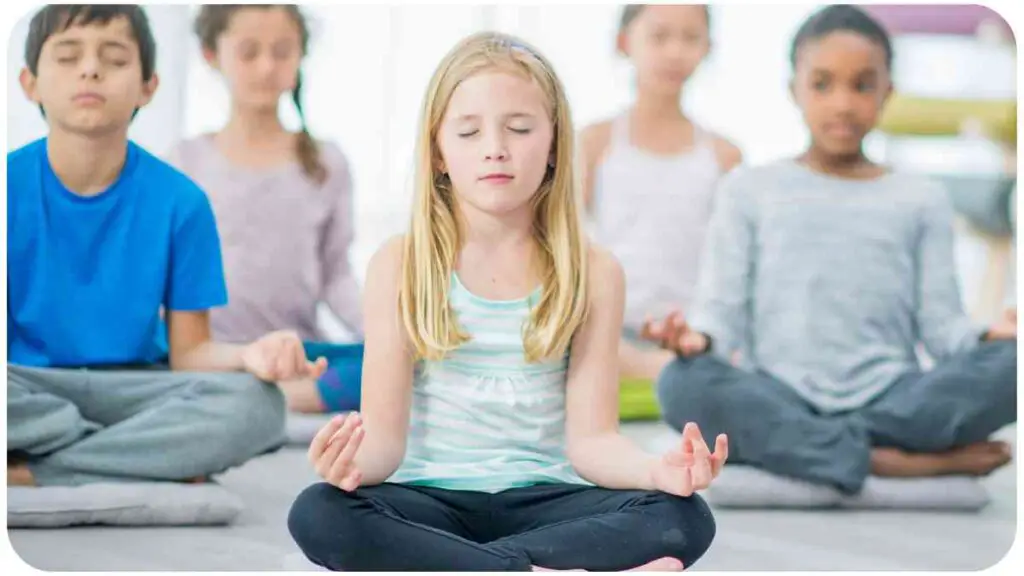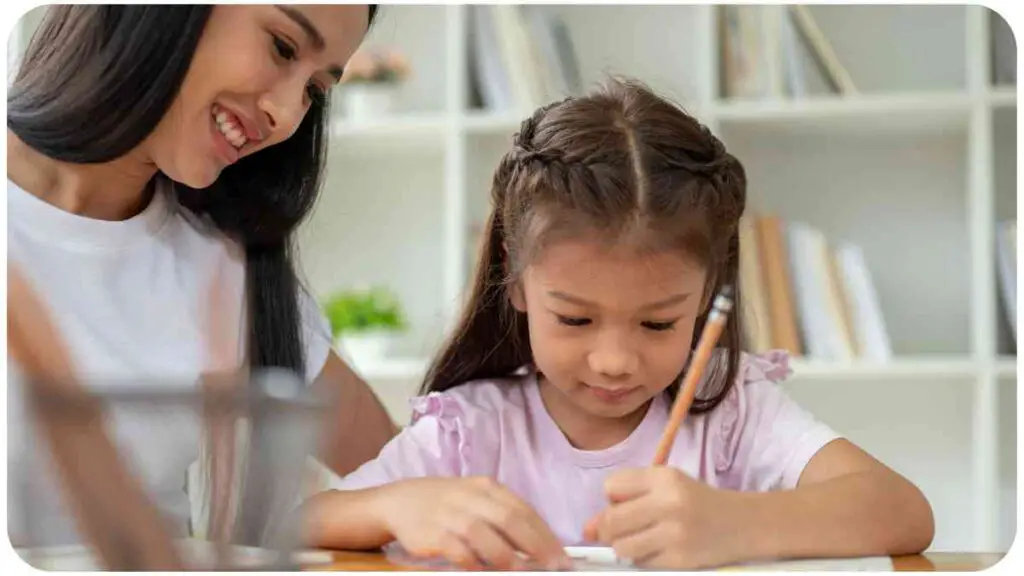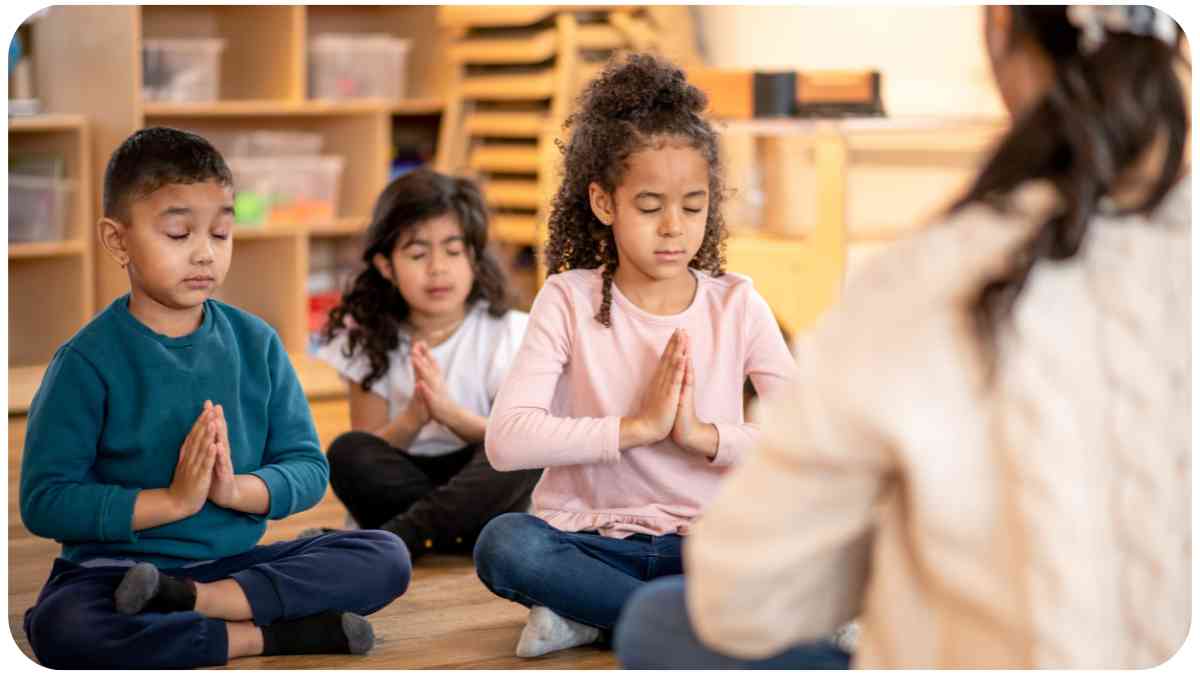In our fast-paced world, the practice of mindfulness is not just for adults; it’s also a valuable skill for children. As a parent, teacher, or caregiver, you might be wondering how to introduce mindfulness and meditation to kids in a way that’s engaging and effective.
This article will guide you through 13 meditation methods specially designed for children, helping them cultivate mindfulness and emotional well-being.
| Takeaways |
|---|
| Mindfulness is beneficial for children’s development, promoting emotional resilience and overall well-being. |
| Start introducing mindfulness with short and engaging activities, adapting them to your child’s age and interests. |
| Visualization techniques, like guided imagery and magic bubble visualization, are powerful tools for fostering mindfulness. |
| Mindfulness can be incorporated into daily life through activities like mindful walking, coloring, and mindful listening. |
| Troubleshoot challenges by embracing movement-based mindfulness, involving children in decision-making, and integrating mindfulness into routines. |
| Explore success stories and real-life experiences to gain insights into the positive impact of mindfulness on children. |
2. Why Mindfulness for Kids?
Before we delve into the techniques, let’s understand why mindfulness is crucial for children’s development. Research has shown that mindfulness can enhance attention, reduce stress and anxiety, improve emotional regulation, and foster empathy. Teaching mindfulness to kids provides them with essential tools for navigating life’s challenges.
Explore the world of mindfulness and yoga for kids, offering valuable insights for parents on what they need to know.
3. Benefits of Meditation for Children

Mindfulness meditation offers a plethora of benefits for children. It enhances their cognitive abilities, promotes emotional resilience, and contributes to overall well-being. Additionally, practicing mindfulness from an early age helps children develop a strong foundation for managing stress and building healthy relationships.
4. Getting Started: Tips for Introducing Meditation to Kids
Before diving into specific meditation methods, consider these tips to make the introduction of mindfulness enjoyable and accessible for children.
4.1 Set the Right Environment
Creating a calm and inviting space for meditation is essential. Choose a quiet area free from distractions, with comfortable seating or cushions.
Create a peaceful bedtime routine with calming nightly meditations designed to ease children into a restful sleep.
4.2 Choose the Right Time
Select a time when your child is naturally more relaxed, perhaps before bedtime or after school. Consistency is key, so make it a daily practice.
4.3 Start with Short Sessions
Kids may initially find it challenging to sit still for extended periods. Begin with short sessions, gradually increasing the duration as their comfort level grows.
5. Mindfulness Through Breath: The Basics

One of the fundamental principles of mindfulness is focusing on the breath. These techniques help kids connect with their breath and cultivate a sense of calm.
5.1 Deep Belly Breathing
Encourage your child to take slow, deep breaths, filling their belly like a balloon. This technique promotes relaxation and awareness of breath.
5.2 Flower Breathing Technique (Table 1)
| Step | Instructions |
|---|---|
| 1 | Imagine holding a flower. |
| 2 | Inhale deeply, smelling the flower. |
| 3 | Exhale slowly, as if blowing a gentle breeze. |
| 4 | Repeat, focusing on the calming rhythm. |
Table 1: Flower Breathing Technique
6. Visualization Techniques
Visualization is a powerful tool for children to explore their imagination while cultivating mindfulness.
Help anxious kids find serenity through relaxation techniques and guided meditations. Support their emotional well-being with these effective practices.
6.1 Guided Imagery
Guide your child through a story that involves vivid imagery. Encourage them to imagine a peaceful place, engaging all their senses.
6.2 Storytelling Meditation
Create short mindfulness stories that capture your child’s attention, incorporating elements of visualization and positive affirmations.
6.3 Magic Bubble Visualization (Table 2)
| Step | Instructions |
|---|---|
| 1 | Imagine a bubble wand in your hand. |
| 2 | Take a deep breath and blow a bubble. |
| 3 | Watch the bubble as it floats away, carrying worries with it. |
| 4 | Continue until you feel a sense of calm. |
Table 2: Magic Bubble Visualization
7. Body Scan Meditation for Kids
Body scan meditation involves focusing attention on different parts of the body, promoting awareness and relaxation.
8. Mindful Walking
Turn a simple stroll into a mindfulness exercise. Encourage your child to pay attention to each step, fostering a sense of presence and grounding.
9. Loving-Kindness Meditation
Teach your child to cultivate compassion and love towards themselves and others through loving-kindness meditation.
Introduce children to the benefits of stretching and breathing through beginner yoga classes designed to promote physical and mental well-being.
10. Mindful Coloring and Drawing

Engage kids in creative mindfulness by incorporating coloring or drawing activities. This allows them to express themselves while staying present in the moment.
11. Mindful Listening Activities
Help children develop attentive listening skills by incorporating sound-focused activities into their meditation practice.
12. Mindfulness Games for Kids
Make mindfulness fun with interactive games that reinforce key concepts. Let’s explore two exciting games.
Engage kids in yoga without mats with easy, free-flowing sequences at home. Encourage a love for movement and mindfulness with these accessible and enjoyable practices.
12.1 The Sensory Scavenger Hunt
| Sense | Item to Find |
|---|---|
| Sight | Something blue |
| Touch | Something soft |
| Smell | Something sweet |
| Hearing | Something that makes a sound |
| Taste | Something sour |
Table 3: The Sensory Scavenger Hunt
12.2 Musical Mindfulness Chairs (Table 4)
| Round | Instructions |
|---|---|
| 1 | Walk around the chairs while calming music plays. |
| 2 | When the music stops, find a chair and sit mindfully. |
| 3 | Discuss feelings and observations after each round. |
Table 4: Musical Mindfulness Chairs
13. Troubleshooting Common Challenges
Introducing meditation to kids may come with challenges. Let’s address a few common hurdles and how to overcome them.
13.1 Restlessness
If your child appears restless during meditation, try incorporating movement-based mindfulness, such as yoga or mindful dancing. Finding a balance between stillness and movement can help them stay engaged.
13.2 Lack of Interest
To spark interest, involve your child in the decision-making process. Let them choose a meditation method or activity they find appealing. This empowers them and makes the practice more enjoyable.
13.3 Incorporating Mindfulness into Daily Life
Encourage mindfulness beyond meditation sessions. Simple practices like mindful eating, pausing to take a few breaths, or expressing gratitude can be seamlessly integrated into daily routines.
14. Success Stories: Real-Life Experiences
Learn from the experiences of parents, teachers, and experts who have successfully introduced mindfulness to children. Real-life stories provide valuable insights and inspiration.
15. Conclusion
Incorporating mindfulness into a child’s routine can have profound and lasting effects on their well-being. Experiment with different meditation methods and activities to discover what resonates with your child. Remember, the journey towards mindfulness is unique for each individual, and patience is key.
By embracing these 13 meditation methods, you’re laying the foundation for a lifetime of emotional resilience and well-being in your child.
As you embark on this mindfulness journey with your child, share your experiences and successes with others. The more we collectively embrace mindfulness, the brighter the future becomes for the next generation.
Whether it’s the calming rhythm of Flower Breathing, the imaginative world of Magic Bubble Visualization, or the interactive fun of the Sensory Scavenger Hunt, there’s a mindfulness method suited for every child. Take the time to explore, connect, and nurture the mindful spirit within your child.
Further Reading
Here are some additional resources for further exploration into mindfulness for kids:
- Mindful.org: Explore a wealth of information on introducing mindfulness to children, including practical tips and guided activities.
- Declutter The Mind: Discover a collection of mindfulness activities specifically designed for kids, promoting relaxation and focus.
- Positive Psychology: Delve into positive psychology approaches to mindfulness for children, with insights into activities that enhance well-being.
FAQs
How can I introduce mindfulness to my child?
To introduce mindfulness to your child, start with simple and engaging activities like deep belly breathing or visualization techniques. Make it a positive and enjoyable experience.
When is the best time to practice mindfulness with my child?
The best time to practice mindfulness with your child depends on their schedule and energy levels. Experiment with different times, but consider incorporating it into daily routines, such as before bedtime or after school.
Are there mindfulness activities suitable for very young children?
Yes, there are mindfulness activities suitable for very young children. Activities like mindful coloring, gentle movements, or even lullabies can be adapted to their age and developmental stage.
How do I address resistance or lack of interest in mindfulness?
If your child shows resistance or lack of interest, involve them in the decision-making process. Allow them to choose a meditation method or activity they find appealing, empowering them in the practice.
Can mindfulness be integrated into everyday activities?
Absolutely! Mindfulness can be seamlessly integrated into everyday activities. Encourage mindful eating, moments of conscious breathing, or expressions of gratitude throughout the day to make it a natural part of their routine.

Hello, my name is Hellen James! I am a yoga teacher and writer who loves to share information about how you can achieve a more fulfilling life. I have been practicing mindfulness, yoga, and meditation for over 10 years. My passion for these practices has led me to teach them to others.

